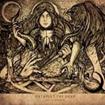 CATAPULT THE DEAD All Is Sorrow LP (Wet Machine) 16.98
CATAPULT THE DEAD All Is Sorrow LP (Wet Machine) 16.98
���This San Francisco area outfit manages to set themselves apart from the heap of Neurosis-inspired sludge by cranking up the organ and pushing out into the front of their sound on debut album All Is Sorrow. While the huge, portentous riffage, atmospheric flourishes and morose tempos situate Catapult The Dead's sound within that well-traveled realm first mapped out by Neurosis and Isis, the group offer some interesting wrinkles in that sound to tantalize enthusiasts of primal metallic mysticism. The packaging is pretty cool, with great black line art from Nick Sandy that's a little reminiscent of John Baizley, and which echoes the mythic imagery present in the band's lyrics presented in an eight page parchment-style booklet that accompanies the LP; the record itself is made up on a single, nearly forty minute song spread across the two sides, a sprawling, gothic-tinged sludge epic.
���It sprawls out as a multi-part saga, first rumbling across the beginning of the album as a crushing, doom-laden dirge draped with that swirling pipe organ-like sound, swirling around the slow, monolithic riffs and lumbering drumming, but then later moving through solemn passages of piano-laced slowcore, droning riffage wrapped in symphonic synth-strings, washes of Morricone-like orchestral atmosphere sweeping over the grinding slo-mo heaviness, threads of neo-classical delicacy winding throughout the band's crawling, tortured chuggery. That mixture of swirling piano and organ accompaniment cab be heard throughout almost the entire song, often taking over as the lead instrument as it weaves these mournful melodic shapes over the sparse and ponderous drums, the roar of the guitar washing away into a haze of restrained, textural sound. Even as the band's thunderous heaviness drifts out into the more subdued, pensive sections of the album, though, the vocals remain abrasive, the singer's gruff, guttural roar trading off against a scathing high-pitched shriek that ratchets up the frenzied energy whenever it appears. These guys are definitely working with familiar materials, the Neurosis influence echoing in Sorrow's long, drawn out riffs marching into the glare of a dying sun, and in the pounding fire-dance of the tribal rhythms; but the band succeeds in reshaping these elements into their own image, especially on the second half of the album where the song evolves into soaring, folk-flecked melodies that almost hint at an uglier, more ragged Amorphis, and in those moments when the organs swell up and douse the band's churning sludge in a thick amber glow. Limited to two hundred fifty copies, and includes a digital download of the album.

